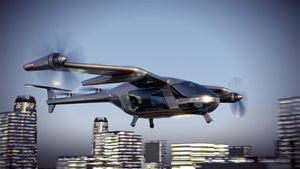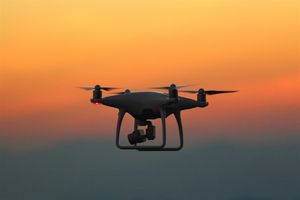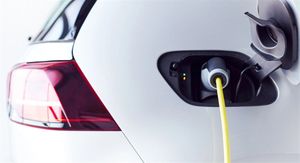
Arizona is rapidly emerging as a pivotal battleground for the future of transportation, with ambitious plans to become a leading hub for flying car technology, officially known as Advanced Air Mobility (AAM) or electric vertical takeoff and landing (eVTOL) vehicles. This futuristic vision, once confined to science fiction, is now taking concrete shape through significant legislative backing, dedicated state funding, and an influx of private sector innovation. As of late 2025, the Grand Canyon State is not just observing but actively shaping the regulatory and infrastructural landscape required for these aerial vehicles, promising to revolutionize commutes, logistics, and urban planning.
The immediate implications are profound, setting the stage for a new economic frontier in Arizona. The state's proactive stance, including a $2 million allocation to study AAM infrastructure and the establishment of an "Institute for Advanced Mobility," signals a clear intent to attract investment and foster job creation in this burgeoning industry. While the thrill of personal aerial transport captures public imagination, the journey from concept to widespread adoption involves navigating complex challenges, from establishing comprehensive safety protocols and managing air traffic to building specialized vertiports and ensuring equitable access.
Arizona's Ascent: A Detailed Look at the Flying Car Revolution
Arizona's journey towards becoming an AAM leader is marked by a series of strategic developments and legislative efforts. A key moment arrived with the state budget's allocation of $2 million, championed by figures like Senator David Farnsworth, aimed at laying the groundwork for flying car infrastructure. This funding underscores a serious commitment to understanding and integrating vertiports – specialized takeoff and landing pads – into the state's urban fabric, potentially atop existing parking structures. Further solidifying this commitment, Governor Katie Hobbs has expanded the Arizona Commerce Authority's remit, transforming a division into the "Institute for Advanced Mobility" to specifically focus on three-dimensional travel solutions.
The timeline for these advancements is accelerating. By September 2026, the Arizona Department of Transportation (ADOT) is mandated to deliver a statewide plan for the necessary electric charging stations, a critical component for the widespread adoption of eVTOLs. On the regulatory front, the Federal Aviation Administration (FAA) made a significant move in October 2024 by approving a new classification for "powered-lift aircraft," streamlining the certification process for eVTOLs by allowing them to take off and land vertically without needing to drive to an airport. However, the FAA still needs to establish comprehensive rules for air traffic management and designated flight corridors, which are crucial for ensuring safety and efficiency in shared airspace.
Several key players are at the forefront of this innovation. Alef Aeronautics, for instance, has been actively developing its Model A, a flying car designed to fit in a standard parking space, and has been accepting pre-orders for a projected cost of $300,000. Samson Sky is another notable innovator, with its "Switchblade," a two-seater, three-wheeled vehicle capable of both road and air travel, anticipating production and delivery within the next two years at a price point between $170,000 and $195,000. Over 60 Arizonans have already placed pre-orders for the Switchblade, highlighting local enthusiasm. Additionally, Wisk Aero, a subsidiary of Boeing (NYSE: BA), is developing its Cora eVTOL vehicle, positioning itself as a future air taxi service provider. Initial market reactions have been cautiously optimistic, with strong pre-order interest indicating a readiness among early adopters, despite the significant upfront costs and ongoing regulatory hurdles.
Market Movers: Companies Poised for Triumph or Turbulence
The emergence of flying cars in Arizona presents a dynamic landscape for public and private companies, creating both immense opportunities and potential disruptions. Companies directly involved in the development and manufacturing of eVTOLs stand to gain significantly. Alef Aeronautics and Samson Sky, though currently private, are prime examples. Should they go public or partner with larger entities, their valuations could soar. Similarly, Wisk Aero, backed by aerospace giant Boeing (NYSE: BA), benefits from substantial resources and expertise, giving Boeing a strong foothold in the burgeoning AAM sector. Other aerospace and defense companies, such as Textron (NYSE: TXT) or Lockheed Martin (NYSE: LMT), could also pivot or invest in AAM technologies, leveraging their experience in aviation manufacturing and systems integration.
Beyond the vehicle manufacturers, a ripple effect will be felt across various industries. Companies specializing in advanced battery technology, such as QuantumScape (NYSE: QS) or Solid Power (NASDAQ: SLDP), could see increased demand for their high-density, lightweight power solutions essential for eVTOLs. Software companies focusing on air traffic management, autonomous flight systems, and navigation, like those developing AI for self-driving cars, could adapt their technologies for aerial applications. Infrastructure developers and construction firms will also be critical players in building the necessary vertiports and charging networks. Real estate companies, particularly those involved in commercial property development, might see new opportunities in designing and integrating vertiports into urban landscapes.
However, not all companies will benefit equally. Traditional automotive manufacturers that fail to adapt or invest in AAM could find themselves at a disadvantage as transportation paradigms shift. Airlines might face new competition for short-to-medium distance routes, potentially impacting their regional operations. Companies heavily invested in conventional ground-based public transit infrastructure could also experience a re-evaluation of demand in areas where flying cars offer a faster alternative. Furthermore, the high initial cost of flying cars means that luxury and specialized transport services might thrive first, while mass-market adoption will depend on significant cost reductions, posing a challenge for companies aiming for broad accessibility early on. The insurance industry will also need to innovate, developing new policies and risk assessments for aerial personal transport.
Wider Significance: Reshaping Industries and Urban Life
The rise of flying cars in Arizona is more than just a technological marvel; it's a significant indicator of broader industry trends pointing towards a future of integrated, multi-modal transportation. This event fits squarely into the Advanced Air Mobility (AAM) revolution, a global movement projected to grow into a $115 billion market by 2035, creating an estimated 280,000 jobs nationwide. Arizona's proactive measures, like establishing the Institute for Advanced Mobility and mandating ADOT's charging station plan, position it as a trailblazer, potentially setting precedents for other states and nations. This leadership could attract further innovation, investment, and talent, solidifying its status as a Silicon Valley for air mobility.
The potential ripple effects on competitors and partners are extensive. Traditional helicopter services might face stiff competition from quieter, more efficient, and potentially more affordable eVTOLs for certain applications like air taxis, medical transport, or tourism. Ground-based ride-sharing companies like Uber (NYSE: UBER) and Lyft (NASDAQ: LYFT) could seek to integrate AAM into their service offerings, either through partnerships or by developing their own fleets, transforming urban mobility from two dimensions to three. The energy sector, particularly electricity providers, will need to scale up infrastructure to support the massive charging demands of eVTOL fleets, presenting both challenges and opportunities for utility companies and renewable energy providers.
Regulatory and policy implications are paramount. The FAA's new classification for "powered-lift aircraft" is a crucial step, but the development of comprehensive air traffic control systems for low-altitude airspaces and the establishment of designated flight corridors are still ongoing. State-level regulations, such as those Arizona is developing for vehicle registration and vertiport zoning, will need to be harmonized with federal guidelines to create a seamless operational environment. Historically, major transportation shifts, from the advent of the automobile to commercial aviation, have always necessitated significant regulatory overhauls and infrastructure investments. Arizona's current efforts can be compared to the early 20th-century development of highway systems or airport networks, where forward-thinking policy laid the foundation for future economic booms and societal transformations. The challenges of noise pollution from multi-rotor vehicles and the need for public trust, especially given past "rocky starts" with autonomous vehicle testing, underscore the importance of robust safety standards and transparent development.
What Comes Next: Navigating the Skies of Tomorrow
In the short term, the focus for flying cars in Arizona will remain on rigorous testing, regulatory refinement, and infrastructure development. Over the next 12-24 months, we can expect to see continued pilot programs, potentially involving early models like the Samson Sky Switchblade or Alef Aeronautics Model A, operating under strict experimental classifications. The ADOT's detailed plan for electric charging stations, due by September 2026, will be a critical milestone, guiding the initial rollout of vertip'orts and energy supply networks. Furthermore, the FAA's ongoing work to establish comprehensive air traffic management rules for low-altitude airspace will be crucial for scaling operations beyond limited test flights. Investors should monitor progress in these areas, as successful execution will de-risk the sector and attract further capital.
Looking further ahead, the long-term possibilities are transformative. As technology matures and production scales, the current high price tags (ranging from $170,000 to $300,000) are expected to decrease, making flying cars more accessible to a broader segment of the population. This could lead to a significant redistribution of urban populations, with people choosing to live further from city centers, leveraging drastically shortened commute times. This scenario would necessitate a complete reimagining of urban planning, with cities adapting to integrate aerial traffic seamlessly. New market opportunities will emerge in areas like specialized aerial logistics, emergency services, and even personal leisure travel. Conversely, challenges such as managing noise pollution, ensuring cybersecurity for autonomous systems, and addressing potential privacy concerns related to aerial surveillance will require ongoing innovation and regulatory oversight.
Potential strategic pivots or adaptations will be required across industries. Traditional automotive companies might need to acquire or partner with AAM startups, while real estate developers will need to incorporate vertiport designs into future projects. Utility companies will need to invest heavily in smart grid technologies to manage the increased electricity demand. The market opportunities are vast for innovators in battery technology, lightweight materials, advanced sensors, and AI-driven flight control systems. Potential scenarios range from a gradual, niche adoption of flying cars for luxury and specific commercial uses, to a more widespread integration into daily life, fundamentally altering how we perceive and interact with transportation. Investors should watch for strategic partnerships, technological breakthroughs that enhance safety and efficiency, and clear regulatory pathways that provide certainty for developers and operators.
Wrap-Up: Arizona's High-Stakes Bet on the Future of Flight
Arizona's aggressive pursuit of the flying car future represents a high-stakes, yet potentially high-reward, bet on the next generation of transportation. Key takeaways from this evolving narrative include the state's significant financial and legislative commitment, the rapid pace of regulatory development at both state and federal levels, and the active involvement of pioneering companies pushing the boundaries of aerial mobility. The integration of flying cars promises to unlock new economic opportunities, create jobs, and fundamentally reshape urban planning and personal mobility, offering a compelling vision of drastically reduced commute times and enhanced connectivity.
Moving forward, the market will closely scrutinize progress on several fronts. The successful development and deployment of robust infrastructure, particularly vertip'orts and a comprehensive charging network, will be paramount. Equally critical will be the FAA's continued work on establishing clear and safe air traffic management protocols for shared airspace, building public trust through rigorous safety standards, and addressing environmental concerns like noise. The evolution of battery technology to extend range and reduce weight, alongside advancements in autonomous flight systems, will also be crucial determinants of widespread adoption.
The lasting impact of Arizona's pioneering efforts could extend far beyond its borders, serving as a blueprint for other regions looking to embrace Advanced Air Mobility. Investors should monitor the performance of early movers in the eVTOL space, the strategic partnerships forming between aerospace giants and tech innovators, and the ongoing legislative and regulatory developments. While the journey to ubiquitous flying cars will undoubtedly face turbulence, Arizona's current trajectory suggests a future where the sky is no longer the limit, but rather a new frontier for innovation and investment. This content is intended for informational purposes only and is not financial advice





